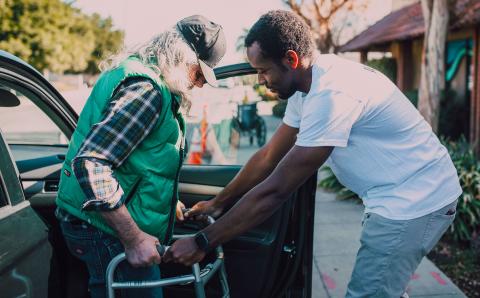For many years, Sunday mornings were the most difficult time of the week in our home.
Things slightly improved when we instituted a reward of stopping at a Tim Hortons’ drive-through on the way to church if we exited the house on time with minimal havoc.
However, the second our kids reached the age that it was their decision to make, they stopped attending church, turning away from God and the Christian faith.
My family isn’t alone. Research shows that about 66% of Canadian and American youth who attend church will leave as young adults.
While every person leaves for their own reasons, I believe a key one for my young adults was the difficulty in fitting into the norms of the church structure while living with invisible disabilities. This resulted in disconnection and deep feelings of not belonging.
For example, in the years before they left, my kids struggled to sit through services. Sermons were too complicated to understand, as were the expected social nuances.
Invisible disabilities are conditions you can’t see. They can be cognitive, physical, mental, or sensory—or simply chronic pain. A particular difficulty of living with an invisible disability might be that others are unaware of the challenges someone is facing. Sometimes this results in judgment, isolation, or rejection.
This was the case with my young adults. No one at church was ever mean or intentionally rejecting; however, they were passed by, over and over, for years. As my children aged, they became increasingly angry to be at church and held themselves apart.
Friendship rarely or never happened. People said the occasional hello, but genuine relationships where they were uniquely known eluded them. Their invisible disabilities seemed to make them invisible.
This had nothing to do with how caring our church is. It brims with truly kind people. Love flourishes in this special place.
I know this firsthand because, as a person with visible physical disabilities, genuine friendship and warmth have been repeatedly extended to me. God’s people have been very intentional in loving me.
In the case of my kids, though, there was nothing visible to cue caring people that perhaps a little extra love and understanding or an offer of friendship would go far.
Someone recently pointed out to me that invisible disabilities are, by nature, invisible. How are we supposed to go out of our way to love people living with challenges we are unaware of? Similarly, many struggle deeply with things unrelated to a disability. Often we have no idea that the brightly smiling person in the pew beside us is sobbing inside. We might not know that their marriage is in trouble, their work is in jeopardy, or their kids are being bullied, or that they’re carrying some other enormous burden they feel no one would understand or care about.
People can be excellent at hiding intense pain while silently crying out for compassion, friendship, and love. A gentle hug, kind smile, or invitation for lunch after the service might mean everything.
Fortunately, we don’t need to wait until we know a person’s story to extend love and friendship to those around us. When we make love our go-to, we intentionally treat with kindness every person God brings across our paths.
When we ask God to make our hearts sensitive to those who are alone, struggling, or hurting, we can trust the Holy Spirit to use us to share the Father’s love with those who especially need it.
When we do so, we follow in the steps of Jesus, and love becomes the story of our lives.
About the Author
Jenna C. Hoff is a freelance writer and editor in Edmonton, Alta. She is a member of Inglewood Christian Reformed Church.









